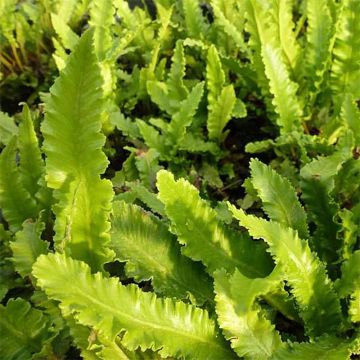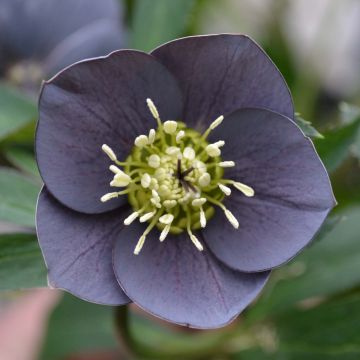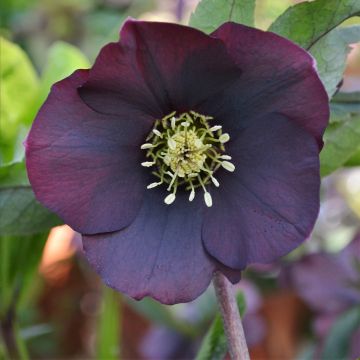

Asplenium scolopendrium Cristatum Group - Hart's Tongue Fern
View more pictures
Hide images

Gemina J.

A few months later... a magical woodland atmosphere in my garden
Gemina J. • 59 FR
Asplenium scolopendrium Cristatum Group - Hart's Tongue Fern
Asplenium scolopendrium Cristatum Group
Hart's Tongue Fern, Horse Tongue, Buttonhole Fern
The hart's tongue fern is a sturdy and invigorating plant. The delivered plant is (more than tiny) only one 1cm (0in) tall leaf. Usually, the delivered plants are more abundant and in better condition. I wonder if I will recommend it at this time, the stocks seem neglected and the customers are paying the price.
Jean, 24/01/2024
Special offer!
Receive a €20 voucher for any order over €90 (excluding delivery costs, credit notes, and plastic-free options)!
1- Add your favorite plants to your cart.
2- Once you have reached €90, confirm your order (you can even choose the delivery date!).
3- As soon as your order is shipped, you will receive an email containing your voucher code, valid for 3 months (90 days).
Your voucher is unique and can only be used once, for any order with a minimum value of €20, excluding delivery costs.
Can be combined with other current offers, non-divisible and non-refundable.
Home or relay delivery (depending on size and destination)
Schedule delivery date,
and select date in basket
This plant carries a 12 months recovery warranty
More information
We guarantee the quality of our plants for a full growing cycle, and will replace at our expense any plant that fails to recover under normal climatic and planting conditions.

Would this plant suit my garden?
Set up your Plantfit profile →
Description
Asplenium scolopendrium 'Cristatum Group', also known as Hart's Tongue Fern, is undoubtedly the most curly-leaved horticultural form of the species. Resembling a beautiful light green curly lettuce, it unfurls its evergreen fronds in dense tufts in shady areas. Its foliage can capture and reflect even the pale rays of winter sun, casting a light on the garden during a time of year devoid of blooms. It is an ideal variety for cold and damp areas of the garden, exposed to the north.
The Hart's Tongue Fern is a perennial fern belonging to the Asplenium family, native to North America, Europe, and Asia. It can be found growing on limestone soils in shaded mountain slopes, ravines, scree, or along watercourses at altitudes below 1800 m (5900 ft), and even inside old wells or in the remains of shaded buildings. The Hart's Tongue Fern is locally protected. Its vernacular name of "Hart's Tongue," is due to the resemblance of its long ribbon-like fronds to the tongue of a deer.
Anchored by a short and thick rhizome covered in reddish-brown scales, Asplenium scolopendrium 'Cristatum Group' forms a clump that reaches a height and width of about 40 cm (16 in) and persists throughout winter. Its fronds, shorter than those of the type species, also have particularly intense undulations along the edges. They are divided and laciniate at their tips, giving them a tousled and frizzy appearance. They are carried by brown and villous petioles that bear dark, brown to black scales at the base. The reproductive cells (sori) are arranged on the undersides of the fronds: they are large, linear, parallel to each other, and oriented obliquely to the rachis; they resemble a type of centipede, which gave the plant its evocative name of scolopendrium.
Asplenium scolopendrium and its cultivars are superb evergreen ferns for rockeries or slopes, under the canopy of trees, in shaded borders, but always in well-drained soil. The 'Cristatum Group' variety is a peculiar fern that easily establishes itself in a few centimetres (about an inch) of compost, clinging between the stones of a rocky scree bordering a small waterfall. But its luminous foliage makes it even more precious in winter, when it covers a wall of old mossy stones, lines the inside of an ancient well, or cascades down a terrace. It thrives alongside ivies, periwinkles, brunneras, lamiums, and the humble Petasites fragrans, which accompany it with fragrance, foliage, or delicate blooms, in stark contrast to its luxuriance. It also forms a beautiful combination with Athyrium niponicum 'Metallicum'.
Report an error about the product description
Asplenium scolopendrium Cristatum Group - Hart's Tongue Fern in pictures


Foliage
Plant habit
Botanical data
Asplenium
scolopendrium
Cristatum Group
Aspleniaceae
Hart's Tongue Fern, Horse Tongue, Buttonhole Fern
Phyllitis scolopendrium
Cultivar or hybrid
Other Asplenium
View all →Planting and care
Scolopendrium ferns are very hardy and grow everywhere in shade or partial shade, as long as the surface layer of soil is very rich in leaf compost. They even cling to limestone cliffs in forests, just on a layer of thick leaf compost a few centimetres (about an inch) deep. They are more afraid of heavy and damp soils than rocky soils. On poor soil, occasionally add some dead leaf compost.
Planting period
Intended location
Care
-
, onOrder confirmed
Reply from on Promesse de fleurs
Similar products
Haven't found what you were looking for?
Hardiness is the lowest winter temperature a plant can endure without suffering serious damage or even dying. However, hardiness is affected by location (a sheltered area, such as a patio), protection (winter cover) and soil type (hardiness is improved by well-drained soil).

Photo Sharing Terms & Conditions
In order to encourage gardeners to interact and share their experiences, Promesse de fleurs offers various media enabling content to be uploaded onto its Site - in particular via the ‘Photo sharing’ module.
The User agrees to refrain from:
- Posting any content that is illegal, prejudicial, insulting, racist, inciteful to hatred, revisionist, contrary to public decency, that infringes on privacy or on the privacy rights of third parties, in particular the publicity rights of persons and goods, intellectual property rights, or the right to privacy.
- Submitting content on behalf of a third party;
- Impersonate the identity of a third party and/or publish any personal information about a third party;
In general, the User undertakes to refrain from any unethical behaviour.
All Content (in particular text, comments, files, images, photos, videos, creative works, etc.), which may be subject to property or intellectual property rights, image or other private rights, shall remain the property of the User, subject to the limited rights granted by the terms of the licence granted by Promesse de fleurs as stated below. Users are at liberty to publish or not to publish such Content on the Site, notably via the ‘Photo Sharing’ facility, and accept that this Content shall be made public and freely accessible, notably on the Internet.
Users further acknowledge, undertake to have ,and guarantee that they hold all necessary rights and permissions to publish such material on the Site, in particular with regard to the legislation in force pertaining to any privacy, property, intellectual property, image, or contractual rights, or rights of any other nature. By publishing such Content on the Site, Users acknowledge accepting full liability as publishers of the Content within the meaning of the law, and grant Promesse de fleurs, free of charge, an inclusive, worldwide licence for the said Content for the entire duration of its publication, including all reproduction, representation, up/downloading, displaying, performing, transmission, and storage rights.
Users also grant permission for their name to be linked to the Content and accept that this link may not always be made available.
By engaging in posting material, Users consent to their Content becoming automatically accessible on the Internet, in particular on other sites and/or blogs and/or web pages of the Promesse de fleurs site, including in particular social pages and the Promesse de fleurs catalogue.
Users may secure the removal of entrusted content free of charge by issuing a simple request via our contact form.
The flowering period indicated on our website applies to countries and regions located in USDA zone 8 (France, the United Kingdom, Ireland, the Netherlands, etc.)
It will vary according to where you live:
- In zones 9 to 10 (Italy, Spain, Greece, etc.), flowering will occur about 2 to 4 weeks earlier.
- In zones 6 to 7 (Germany, Poland, Slovenia, and lower mountainous regions), flowering will be delayed by 2 to 3 weeks.
- In zone 5 (Central Europe, Scandinavia), blooming will be delayed by 3 to 5 weeks.
In temperate climates, pruning of spring-flowering shrubs (forsythia, spireas, etc.) should be done just after flowering.
Pruning of summer-flowering shrubs (Indian Lilac, Perovskia, etc.) can be done in winter or spring.
In cold regions as well as with frost-sensitive plants, avoid pruning too early when severe frosts may still occur.
The planting period indicated on our website applies to countries and regions located in USDA zone 8 (France, United Kingdom, Ireland, Netherlands).
It will vary according to where you live:
- In Mediterranean zones (Marseille, Madrid, Milan, etc.), autumn and winter are the best planting periods.
- In continental zones (Strasbourg, Munich, Vienna, etc.), delay planting by 2 to 3 weeks in spring and bring it forward by 2 to 4 weeks in autumn.
- In mountainous regions (the Alps, Pyrenees, Carpathians, etc.), it is best to plant in late spring (May-June) or late summer (August-September).
The harvesting period indicated on our website applies to countries and regions in USDA zone 8 (France, England, Ireland, the Netherlands).
In colder areas (Scandinavia, Poland, Austria...) fruit and vegetable harvests are likely to be delayed by 3-4 weeks.
In warmer areas (Italy, Spain, Greece, etc.), harvesting will probably take place earlier, depending on weather conditions.
The sowing periods indicated on our website apply to countries and regions within USDA Zone 8 (France, UK, Ireland, Netherlands).
In colder areas (Scandinavia, Poland, Austria...), delay any outdoor sowing by 3-4 weeks, or sow under glass.
In warmer climes (Italy, Spain, Greece, etc.), bring outdoor sowing forward by a few weeks.















































